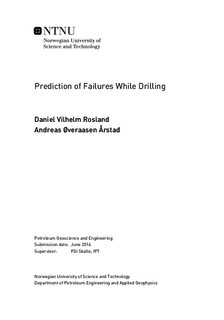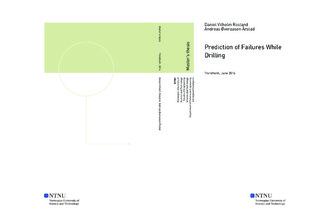| dc.description.abstract | Complex drilling operations, high production expenses and a low oil price influence the modern petroleum industry. Reducing the non-productive-time (NPT) during an operation can reduce the production expenses. Drilling, well control and mud equipment is responsible for 21-30 % of the NPT (Contractor, 2010). The industry needs solutions that reduces drilling related NPT. Our solution was to develop a program that predicts failures while drilling. The program reduces NPT by alerting the operator of failures that will occur in the future.
Historical data on NPT during drilling is important when developing a failure-predicting program. Collected historical data was from 427 offshore wells in the Gulf of Mexico. The goal was to match program output with the historical data.
The program was developed to calculate a probability distribution of future failures. The distribution is calculated based on symptoms detected in real-time-drilling-data (RTDD). As for medical diseases, the probability of a drilling related failure changes with the detected symptoms. A symptom can cause a positive or negative event. All symptoms were linked to their events through relationships. The relationships were collected in an ontology that serves as a database for the program.
The program was developed by placing all relationships in a hierarchal structure. Symptoms were placed on the top and failures were placed on the bottom of the hierarchy. Detection of a symptom activates multiple paths leading to failures. The activated paths were added together and presented as a failure distribution. To match the historical failure distribution, the ontology and the complete program were adjusted.
Data from three actual drilling operations were used to test the program. The failures were one case of lost circulation and two cases of motor stalls. Symptoms were detected and collected from End of Well (EoW) reports and RTDD. The program was capable of predicting the two cases of motor stall failures, but the lost circulation failure was only top three.
Based on the successful prediction of motor stalls, the program was verified as logical. The most probable failure was motor stall with a probability of 18 %. The probabilities were not extreme enough, as the most probable failure should have a probability of at least 50 %.
Future work includes adjusting the ontology to make the failure distribution extreme. To optimize the program further, a method that deactivates time and depth dependent symptoms must be developed. More EoW reports and RTDD are required to continue testing the program. By applying these changes, we believe that the program will be able to predict failures and hence reduce drilling related NPT. | |

